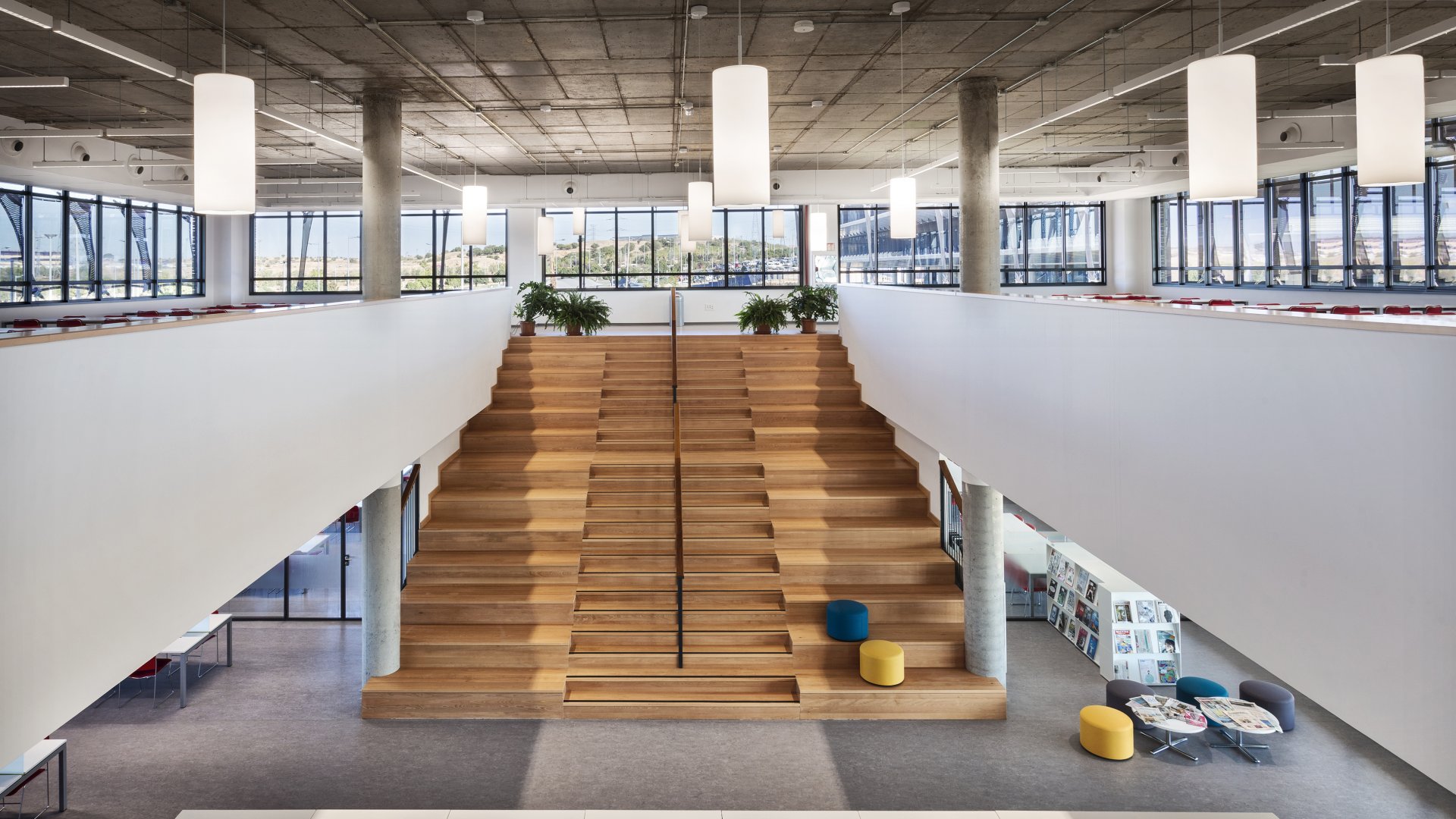
Loyola University Campus: A new benchmark of univerisity campus
October 26, 2020
Imagine what would the first 5G university campus looks like. An international benchmark able to reimagine the present and future of high education. A sustainable model that will lead the new generation of education facilities.
Welcome to Loyola University Campus: The first 5G university campus LEED Platinum in the world.
luis vidal + architects has designed Loyola University´s flagship in Seville based on five key features: technological, accessible, sustainable, responsible, and integrated.
The outcome is a project rated LEED Platinum (first in the world for an integrated campus) and awarded as “Outstanding Innovative Project” at the Andalucía Inmobiliaria Awards, by unanimous decision of the jury.
The design begins with a “glocal” approach (think globally and act in response to local needs and users) that provides community with the best of both worlds, seeking to give a comprehensive response to the challenges of the university.
After carrying out an exhaustive study of the traditional architecture of the area and the region (where Andalusian squares are especially characteristic) and inspired by the integrated North American campuses, the resulting design fosters university life while being a beacon in sustainability.
THREE PILLARS, ONE DESIGN
The project developed by luis vidal + architects, based on a careful analysis undertaken at multiple levels (functional, environmental, and programmatic), has become the world´s first 5G campus. This framework stands on three pillars: the notion of community, the need for flexibility, and the commitment to sustainability.
COMMUNITY
The structure of the campus responds to the inspiring principles of the institution, which promotes the education of people insisting not only on academic and personal training, but also on the spiritual realm.
Precisely, personal and spiritual development are at the heart of the architectural proposal, symbolically represented on both axes that run through the campus: on one hand, along the longitudinal axis different common spaces (administration, cafeteria or laboratories) are located; on the other, the transversal axis that refers to human development hosts both the library and the chapel.
The intersection between the two axes generates a huge square that becomes the heart of the university, its core, the place to meet.
The design of this large square, that shares its dimensions with large squares placed in Seville and Cordoba, is a reinterpretation of traditional Andalusian architecture that conceives these spaces as a social centre for encounter in the cities.
FLEXIBILITY
This campus is conceived as a tailor-made design that adapts to the University needs. It has the capacity and flexibility to expand, modify and extend according to present and future demands.
The first analysis of the project diagnosed the existence of a difficult site area and program, an aggressive climate, and complicated phasing conditions. The answer to these challenges is based on a concentration strategy: a small number of buildings, efficient and optimized along an axis. The programmatic densification allows to concentrate in a first phase the whole program of classrooms, laboratories, general services, and common spaces (cafeteria and auditorium) in one single piece. Thus, resources are optimized to the maximum.
Besides, due to the building concentration, certain parts of the site area have been released as a flexible resource for future occupation. These free zones are located to undertake a longitudinal growth of the classrooms, if necessary, as well as the relocation of uses.
SUSTAINABILITY
Sustainability is a driving force in luis vidal + architects.
As a result of this environmental commitment, Loyola University Campus has been rated PLATINUM in the LEED certification by the U.S. Green Building Council (USGBC), being the first campus in the world to obtain this rating level. Thanks to these sustainable actions: Passive energy and active energy efficiency measures, optimization of facilities and phases, recycling of water and materials and efficient landscaping.